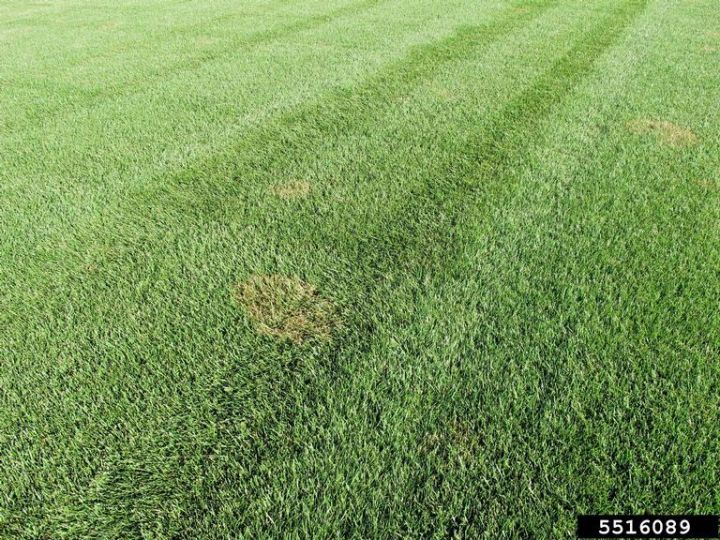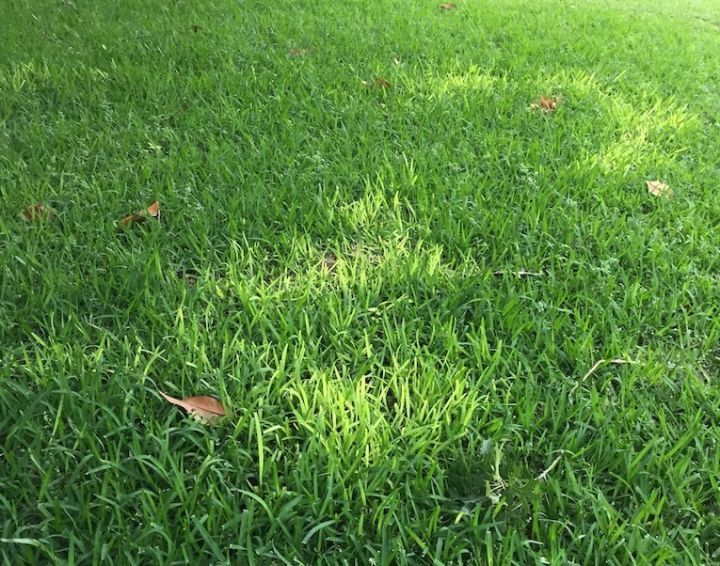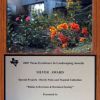Watch for Fall Lawn Diseases
October 8, 2019 | By webadmin
With each new season comes new potential diseases and pests in your landscape. This time of year, as we transition to cooler temperatures and additional rainfall, we see an uptick of fungal diseases in lawns.
Early Signs of Lawn Diseases to Watch For:
Brown patch
Brown patch spreads quickly once it appears in St. Augustine and Zoysia lawns. You will notice circular brown, tan, or yellow patches that can be 6” to a few feet in diameter. If left to spread, the circles can merge together forming large irregular shapes. On closer inspection, leaf blades will have tan lesions with a dark brown border.
The fungus that causes brown patch is Rhizoctonia solani. It thrives in wet conditions coupled with cool night temperatures. Overwatering your lawn, or watering too late in the day or at night, allows the disease to quickly spread. IT’s important to dial back your sprinkler watering in fall, and stick to morning watering instead of evening or nighttime watering. Additionally, fertilizer with high nitrogen levels can boost the fungal infection. Brown patch is often spread from mowers and other lawn equipment, as they move from yard to yard.

Brown Patch
Lee Miller, University of Missouri, Bugwood.org
Commercial fungicides can treat brown patch if there is a severe infection, but the best way to prevent and manage brown patch is with proper lawn care and watering regimens.
Take-All Root Rot (TARR)
TARR is a serious fungal disease that can kill an entire lawn. The fungus usually infects St. Augustine and Bermudagrass, but can also infect zoysia, fescue and perennial rye. TARR is most active in the spring and fall when there is high humidity and temperatures in the 60s. Symptoms include irregularly shaped patches of yellow grass that turn brown and die. TARR is often confused with chlorosis (a yellowing of grass blades due to a nutrient deficiency).

Irregular yellow patches caused by TARR.
TARR can be triggered when lawns are stressed from too much shade, over-watering, poor soils, or over-fertilization. TARR can also be spread from lawn to lawn by lawn maintenance equipment. Because TARR can be so lethal to your lawn, it’s important to take action quickly to lower soil pH and suppress the disease activity. Applications of peat moss and finely-screened organic compost, coupled with feeding and improving your soil, can help treat the disease. In severe cases, your lawn may need to be completely renovated.
Other Fall Lawn Damage
It’s easy to mis-diagnose lawn issues, be they physical or pest and disease related.
Other factors can affect the health of your lawn and resemble fungal diseases are:
- Too much shade – grass is a sun-loving plant and will thin and die out in part to heavy shade.
- Chinch bugs – tiny bugs suck juices from grass, cause browning & dead patches.
- Chlorosis – yellowing caused by a nutrient deficiency, typically presents evenly throughout the lawn.
- Grubs – immature insects that live in soil & feed on grass roots, causing damage similar to TARR.
If you are worried about the health of your lawn this fall, or notice anything you’d like a professional to look at, give us a call.
